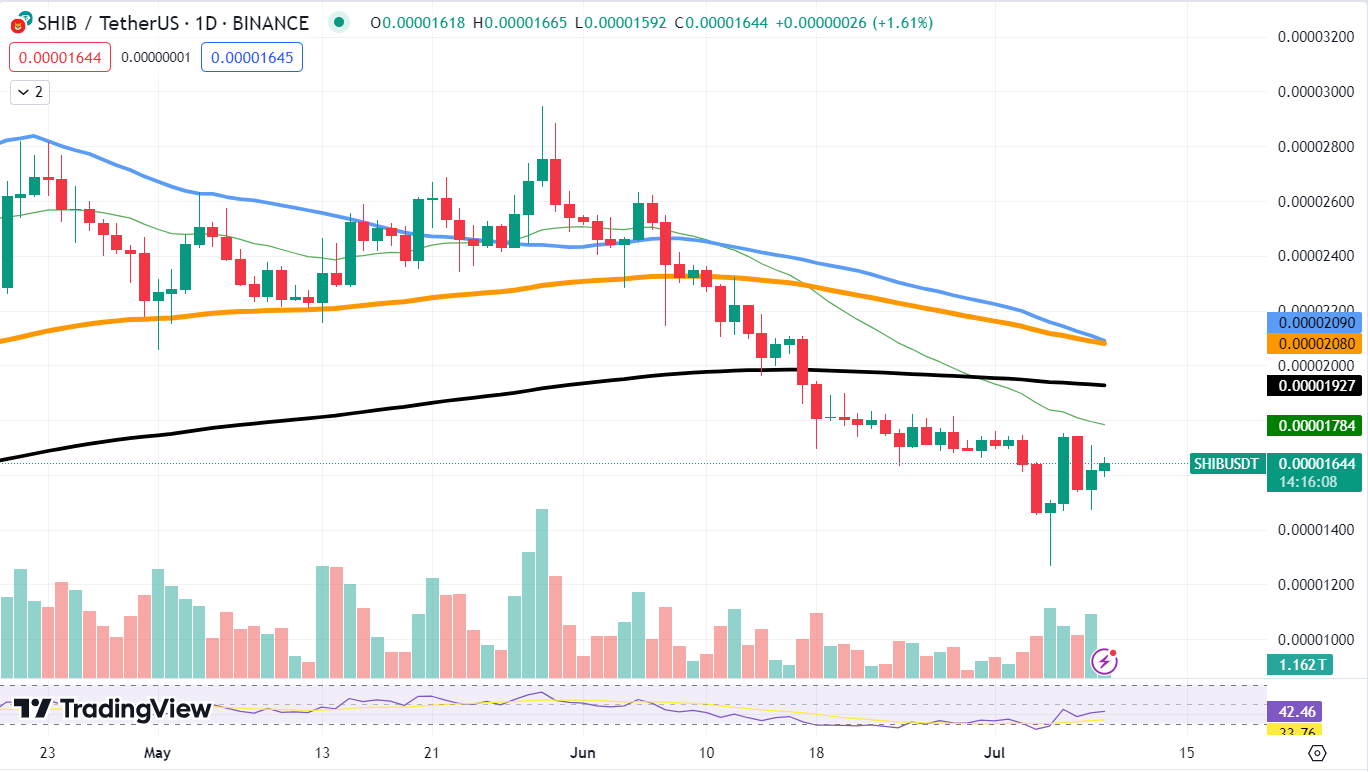
Disclaimer: The opinions expressed by our writers are their own and do not represent the views of U.Today. The financial and market information provided on U.Today is intended for informational purposes only. U.Today is not liable for any financial losses incurred while trading cryptocurrencies. Conduct your own research by contacting financial experts before making any investment decisions. We believe that all content is accurate as of the date of publication, but certain offers mentioned may no longer be available.
Shiba Inu whales have made a comeback on the market with a substantial increase in activity. The reason behind such a sudden comeback remains unclear but at the same time provides us with an important insight: things are normalizing.
Recent transactions show that there have been notable SHIB token movements. For example, Robinhood recorded transactions of $981 billion SHIB, or roughly $15.84 million. Coinbase's hot wallet was also given 161,348 billion SHIB, which is equivalent to $2.61 million.

Additionally, there were significant transfers totaling more than $1 million in SHIB, involving Wintermute's Binance deposit and Binance's hot wallet. These trades suggest that significant participants, or whales, are once again engaging in active SHIB trading. On-chain metrics support this activity.
IntoTheBlock reports that there were 84 large transactions in the last day, with a seven-day high of 199 transactions on July 5, 2024. On July 8, 2024, the total amount of SHIB traded reached a seven-day high of 5.71 trillion SHIB. A possible change in market dynamics is indicated by the reappearance of whale activity in SHIB trading. Such sizable transactions typically suggest institutional investors' confidence in the asset's near-term potential or strategic positioning.
Although the precise reasons behind these whales actions are unknown, they frequently precede notable changes on the market. On a larger scale, the resurgence of whale activity might indicate that Shiba Inu is entering a stabilizing phase. Considerable transactions indicate that large holders appear to have regained interest and confidence following weeks of poor performance and falling prices.
Additionally, the performance we are seeing right now could be the result of an exchange-related funds redistribution and does not necessarily affect the performance of the asset.

 Dan Burgin
Dan Burgin Vladislav Sopov
Vladislav Sopov U.Today Editorial Team
U.Today Editorial Team